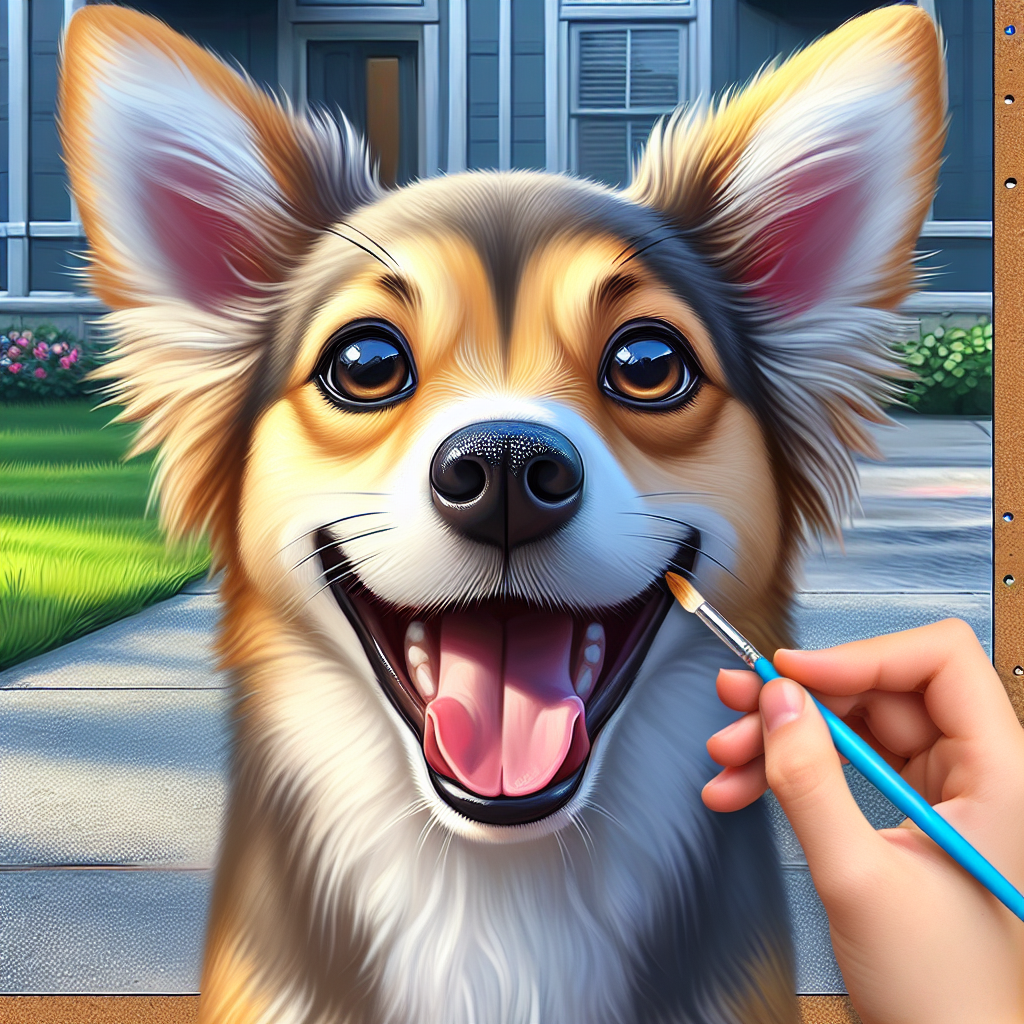Introduction to Flea World

Ah, fleas. Those tiny critters that make the most laid-back pets twitchy and restless. You’d think they’d be easy to spot, but these little guys are masters at hiding. They’re like those elusive socks that disappear in the laundry—there one minute, gone the next. Fleas are sneaky, and they’re good at it. Welcome to the flea world, where these tiny troublemakers are always one jump ahead.
If you’ve ever tried to pin down what fleas look like, you’re not alone. They’re small, about the size of a pinhead, and a dark reddish-brown. You might catch one out of the corner of your eye, but blink, and it’s gone. They’re flat, which helps them navigate through your pet’s fur with the grace of a ballet dancer—minus the tutu. So, if you’re on a mission to identify these pests, a good flea identification guide is your best friend.
Spotting Fleas on Your Pet
Spotting fleas on pets is no walk in the park. If you’ve ever tried to catch a flea in action, you know it’s like trying to grab a handful of air. Fleas are fast—like, Olympic sprinter fast. They jump long distances, which is part of their charm, if you can call it that. But don’t let them fool you. There are signs of fleas on dogs that you can spot if you know what to look for.
First, keep an eye out for excessive scratching. If your dog is scratching more than usual, it might not just be an itch. Fleas bite, and it drives pets bonkers. You might also notice little black specks on your pet’s skin. That’s flea dirt—yes, it’s as gross as it sounds. These specks are flea droppings, and they’re a dead giveaway.
Then there’s the belly. Fleas love it there. It’s warm and cozy. Roll your pet over and take a peek. If you see fleas scurrying around or flea bites, it’s time to take action. You might not want to get too close, though. Fleas aren’t picky—they’ll hop onto you for a quick snack if they get the chance.
Fleas: The Little Vampires
Now, let’s talk about why fleas are the little vampires of the insect world. They might not sparkle in the sunlight, but they do have a taste for blood. Your pet’s blood, to be exact. Fleas pierce the skin with their mouths, which are like tiny straws, and they suck away—leaving itchy, red welts behind.
This biting business isn’t just a nuisance. Flea bites can cause real problems. Some pets are allergic to flea saliva, which makes the itching worse. It’s like having an itch you just can’t scratch. And it’s not just pets. Flea bites on humans are a thing, too. They seem to favor ankles and feet, but they’re not picky.
Flea characteristics and features include their ability to jump great distances. It’s a superpower, really. They can leap 100 times their own height. Imagine being able to jump over a skyscraper—that’s what it’s like for these little bloodsuckers.
The Flea Anatomy
If you ever get curious enough to look at a flea under a magnifying glass, you’ll see their anatomy is built for survival. Flea anatomy is all about efficiency. They’ve got long back legs for jumping, and their bodies are covered in hard shells—like tiny tanks. This makes them tough to squish.
Their bodies are flat, which lets them slip through fur without getting caught. They’ve got sharp mouthparts that pierce the skin with ease. And once they’re latched on, they don’t let go until they’ve had their fill.
How to recognize fleas on your pet? Well, if you see them, you’ll know. They dart around like they’ve had too much caffeine. And if you see your pet scratching like they’ve got an itch that won’t quit, it’s time to grab that flea comb and start searching.
Identifying Flea Bites on Humans
Now, let’s shift gears and talk about flea bites on humans. If you’ve ever been bitten, you know it’s not a walk in the park. Flea bites are small, red, and incredibly itchy. They usually show up in clusters or lines, as if the flea decided to make a buffet out of you.
What do flea bites look like? Imagine a mosquito bite, but smaller and more maddening. They often appear around the ankles and legs, but fleas aren’t shy—they’ll go anywhere they can find skin.
If you’re dealing with flea bites, there are a few things you can do. First, try not to scratch. Easier said than done, I know. But scratching can lead to infection, and nobody wants that. You can use anti-itch creams to help with the irritation. And if you’re finding yourself bitten often, it might be time to check your home and pets for fleas.
So, there you have it—your crash course in what fleas look like and how to spot them. It’s not glamorous, but it’s necessary. Fleas are part of the package when you have pets, but with a little vigilance, you can keep them in check. Thanks for sticking around to learn about these little pests. Stay sharp and keep an eye out for those tiny jumpers.
Flea Eggs: Tiny Trouble Makers
Ah, flea eggs. Those little white specks that are the beginning of your uninvited guests. Ever found yourself squinting at your dog’s fur, wondering, “what do flea eggs look like on a dog?” You’re not alone. These tiny troublemakers are hard to spot. They’re small—like, really small. Think of them as the grains of salt that refuse to dissolve, lurking around until they’ve spread everywhere.
They lay in wait, usually in your pet’s fur or wherever your pet hangs out. These eggs are the silent army, preparing for an invasion. You might not notice them at first. They’re almost invisible, blending in like they’ve got a PhD in camouflage. But give them a few days, and they hatch into larvae, ready to join the squad.
So, you might be sipping your coffee, thinking everything’s peachy, and bam—tiny troublemakers are multiplying. If you’re checking your dog and see little white dots, don’t ignore them. They’re not freckles, and they’re definitely not going to leave on their own.
Larvae and Pupae: Hidden Stages
Now, let’s talk about flea larvae and pupae. These guys are the undercover agents of the flea world. You won’t see them strutting around; they prefer to hide in your carpet or under furniture. Picture them as secretive teenagers—flea larvae in carpet, waiting for their moment to shine. They’re like a mystery novel that keeps you guessing.
The larvae are blind, but don’t let that fool you. They’re great at finding dark, cozy spots to grow. And once they hit the pupae stage, they wrap themselves in a cocoon—nature’s way of saying, “Do not disturb.” It’s their version of a spa retreat, preparing to emerge as fully-formed adults ready to wreak havoc.
While you’re busy with life, these sneaky stages plot their takeover. They’re patient, biding their time until the moment is right. Before you know it, they’re everywhere. And you’re left wondering how it all happened so fast. But hey, at least now you know what’s going on beneath your feet.
Flea Infestations: Unseen Invasion
So, you’ve got these flea eggs turning into larvae and pupae. What’s next? The full-blown flea infestation—an unseen invasion that hits you when you least expect it. Picture this: you’re enjoying your morning routine, and suddenly you’re scratching more than your head. You’ve got a flea problem, my friend.
Signs of flea infestation in home can be subtle at first. Maybe your pet’s scratching more, or you notice little bites on your ankles. It’s like an unwanted surprise party, and you’re the host. Fleas are everywhere—on your pet, in your carpet, maybe even on your favorite chair. They’re the houseguests who overstay their welcome, and they’re multiplying at an alarming rate.
You need to act fast. Ignoring it won’t make it disappear. Trust me, I’ve been there. You’ve got to roll up your sleeves and declare war. It’s the only way to reclaim your home. But don’t worry, you’re not alone. Plenty have fought this battle and come out victorious.
Common Hiding Spots for Fleas
Now, let’s play a game of hide and seek. Where do fleas hide in the house? Oh, they’re crafty. They love dark, hidden places. Think behind your couch, in your pet’s bedding, or deep within your carpet. It’s like they’ve got a secret map of all the best hiding spots.
These little critters can make a home out of anything. They’re not picky. As long as it’s warm and dark, they’re happy. It’s like they’ve taken a crash course in stealth tactics. And while you’re going about your day, they’re multiplying in these hidden corners.
But don’t let that scare you. Knowing where to look is half the battle. You can start your search in those sneaky spots, armed with vacuum and spray. It’s a tedious task, but a necessary one. Trust me, once you know where they’re hiding, you’re one step closer to kicking them out for good.
Fleas and Your Pets: A Love-Hate Relationship
Let’s talk about the drama between fleas and your pets. It’s like a soap opera, full of twists and turns. Fleas love your pets, but your pets? Not so much. It’s a one-sided relationship, and your furry friend is the one suffering.
Fleas latch onto dogs like they’re holding on for dear life. They bite and irritate, causing discomfort and even allergies. You’ll notice your dog scratching, biting, and generally being miserable. How fleas affect dogs is no small matter. It’s a daily struggle, and it breaks your heart to see your pet in distress.
But don’t worry. With some flea control tips for pet owners, you can break this toxic relationship. Regular baths, flea collars, and maybe even a visit to the vet can make a world of difference. You’ve got the power to help your pet, and they’ll love you even more for it.
So, here’s to a flea-free life. Thanks for hanging out with me on this wild ride. You’ve got this.
How to Check Your Pet for Fleas
So, you think your pet might have fleas? Welcome to the club. We’ve all been there—scratching our heads, wondering how to check for fleas on pets without feeling like a detective in a bad mystery novel. It’s not rocket science, but it’s not exactly a walk in the park, either. Fleas are these tiny, dark brown insects, about the size of a pinhead. They like to hide out in the warm, cozy confines of your pet’s fur, making flea inspection tips crucial for any pet owner.
First things first—grab a fine-tooth comb. This is your trusty sidekick in the battle against fleas. Start by parting your pet’s fur and comb through, focusing on areas where fleas love to hang out: the neck, belly, and base of the tail. Keep a close eye out for flea dirt, which looks like tiny specks of pepper. If you find some, try placing it on a damp paper towel. If it turns reddish-brown, congrats—you’ve found flea poop. Gross, but effective.
If you’re still unsure, use a flea comb and go over your pet’s fur again. It’s like a treasure hunt, but the treasure is evidence of fleas. You don’t need to be a pro to figure this out. Just a little patience and a keen eye. And remember, your pet deserves a medal for putting up with your detective work.
The Life Cycle of a Flea
Now, let’s talk about the flea life cycle stages. It’s a wild ride, and not in a fun way. Fleas have four stages: egg, larva, pupa, and adult. Think of it as a twisted version of The Circle of Life. Fleas start as eggs—tiny, white, and impossible to see with the naked eye. They hatch into larvae, which look like tiny worms. Not exactly cute, huh?
These larvae then spin cocoons and become pupae. This is the stage where they’re like little ninjas, waiting for the perfect moment to strike—usually when your pet walks by. They emerge as adults, ready to wreak havoc. And here’s the kicker: adult fleas can live for months, happily jumping around and biting anything that moves.
Understanding the life cycle of a flea is key to getting rid of them for good. It’s not enough to just kill the adults. You’ve got to break the cycle—nip it in the bud. Otherwise, you’re just playing a never-ending game of Whac-A-Mole.
Common Misconceptions About Fleas
Ah, myths about fleas. Where do I even start? There are so many misconceptions floating around, it’s enough to make your head spin. One of the biggest myths is that fleas can fly. Spoiler alert—they can’t. Fleas are jumpers, not flyers. They’re like tiny, itchy Olympians, leaping great distances with ease.
Another classic myth is that fleas only live on pets. Not true. These little critters aren’t picky. They’ll happily hang out on your carpet, sofa, or even your bed. Ever wonder why you’re still itching even after treating your pet? Well, now you know.
And let’s not forget the myth that fleas die off in winter. While it’s true that they’re less active in the cold, they don’t just disappear. They’ve got a knack for surviving, even in tough conditions. So, don’t let your guard down just because the temperature drops.
Natural Solutions to Keep Fleas at Bay
If you’re not into chemical warfare, natural flea repellents might be your thing. There are plenty of home remedies for fleas that are worth a shot. For starters, try using a mixture of vinegar and water. Fleas hate the smell of vinegar, and it’s a cheap and easy solution. Just mix equal parts of vinegar and water in a spray bottle, and spritz away.
Essential oils can also do wonders. Lavender, peppermint, and eucalyptus are all known to repel fleas. Add a few drops to your pet’s collar or bedding, and you’ve got yourself a natural flea deterrent. Just remember to do a patch test first—some pets are sensitive to essential oils.
Diatomaceous earth is another option. This fine powder is safe for pets but deadly to fleas. Sprinkle it around your home, let it sit for a day or two, then vacuum it up. It’s like setting a trap for fleas, but without the nasty chemicals.
When to Call in the Professionals
Sometimes, you’ve got to know when to throw in the towel and call in the pros. If your flea problem is out of control, it might be time to look into professional flea control services. These folks have the tools and expertise to tackle even the toughest infestations.
Hiring a professional doesn’t mean you’ve failed as a pet owner. It’s just another tool in your arsenal. They’ve got the gear—and the know-how—to deal with fleas effectively. Plus, it saves you the hassle of doing it all yourself.
At the end of the day, fleas are a part of life when you’ve got pets. They’re sneaky little critters, but with the right approach, you can keep them at bay. Take it from someone who’s been there—sometimes it’s worth getting a helping hand.
Thanks for sticking around. Remember, knowledge is power, even when it comes to fleas. Happy hunting, and may your pets stay itch-free.
Quick Takeaways:
So, what do fleas look like? Picture a tiny, brownish, wingless speck with a taste for chaos. They’re about 1/8 inch long, with flat bodies and long legs—nature’s pogo sticks. Fleas are the Houdinis of the insect world, vanishing into your pet’s fur before you can say “itch.” Their flat shape and hard shell make them tough to crush. And those legs? Perfect for Olympic-level jumps. If you’re spotting fleas on pets, look for fast-moving dots that disappear as quickly as they appear. You might find them around the neck or tail of your furry friend.
Now, let’s talk flea bites on humans. They’re like tiny, itchy reminders of the battle you’re fighting. Usually, they show up around the ankles or waist—sneaky, huh? If you’re wondering how to recognize fleas in your home, check for flea dirt—those little black specs that turn red when wet. That’s flea poop, folks.
In the flea identification guide, eggs are the stealthy players. They look like tiny grains of salt and are usually found in your pet’s bedding or on carpets. And oh, the flea larvae in carpet—little worm-like critters that eat organic debris, waiting to grow up and wreak havoc. Don’t forget about signs of fleas on dogs—excessive scratching, hair loss, or irritated skin are dead giveaways. The flea lifecycle stages are a whirlwind of eggs, larvae, pupae, and adults. Keep an eye out and stay vigilant.
FAQs:
1. *What do fleas look like on pets, and how can I spot them?*
Fleas are tiny, dark brown insects about the size of a pinhead. They move quickly and are often found around the neck, belly, or tail of your pet. If you’re spotting fleas on pets, look for small, fast-moving dots. You might also notice flea dirt—tiny black specks that turn red when wet—on your pet’s skin.
2. *How do I know if my home has a flea infestation?*
Oh, you’ll know. Signs of flea infestation in the home include flea bites on humans, especially around ankles, and finding flea dirt on your pet’s bedding. Those sneaky fleas hide in carpets, upholstery, and cracks in floors. Keep an eye out for the adults, but remember—the eggs and larvae can be harder to spot.
3. *Where do fleas hide in the house, and what do flea eggs look like on a dog?*
Fleas love dark, hidden places—carpets, pet beds, and upholstery are their favorite spots. Flea eggs, on the other hand, are tiny, white, and oval. On a dog, they look like tiny grains of salt and often fall off into the environment where they hatch.
4. *What are the main stages of the flea lifecycle, and how do they affect my pet?*
Fleas go through four stages: egg, larva, pupa, and adult. Each stage has its challenges. Eggs hatch into larvae that feed on debris. Pupae develop into adults, ready to feast on your pet’s blood. Fleas can cause allergic reactions, skin irritation, and sometimes even transmit diseases to dogs.
5. *How can I prevent and control fleas on my pets and in my home?*
For a flea-free home, start with regular checks on your pets—use a flea comb and look for signs like scratching or flea dirt. Wash pet bedding often and vacuum regularly. For natural flea repellents, try essential oils like lavender or eucalyptus. When things get out of hand, professional flea control services might be the answer.
Conclusion:
So, what do fleas look like, and why does it matter? They’re tiny, persistent, and a real pain for you and your pets. Recognizing their characteristics and features—like their flat bodies and jumping prowess—is the first step in reclaiming your home. From flea bites on humans to spotting fleas on pets, their presence is a call to action. Whether you’re dealing with flea larvae in carpets or figuring out where they hide in the house, remember you’re not alone in this battle. Armed with a bit of knowledge and a lot of patience, you can tackle these pesky critters. Thanks for sticking with me through this flea-filled journey. Here’s hoping for fewer surprises and more peaceful mornings. Stay vigilant, and may your home be flea-free!
References:
1. https://nexgard.com.au/dog-parasites/fleas/what-do-fleas-look-and-how-do-i-spot-them
2. https://www.orkin.com/pests/fleas/what-do-fleas-look-like
3. https://moxieservices.com/blog/what-do-fleas-look-like
4. https://insideoutpestservices.com/what-do-fleas-look-like-to-the-human-eye
5. https://www.chewy.com/education/cat/flea-and-tick/what-do-fleas-look-like
Our solution eradicates fleas on contact without harmful chemicals, ensuring a safe environment for your pets and family. Easy to use and highly effective, SayByeBugs helps you maintain a flea-free home. Learn more and order today at SayByeBugs.com
Our solution eradicates fleas on contact without harmful chemicals, ensuring a safe environment for your pets and family. Easy to use and highly effective, SayByeBugs helps you maintain a flea-free home. Learn more and order today at SayByeBugs.com








